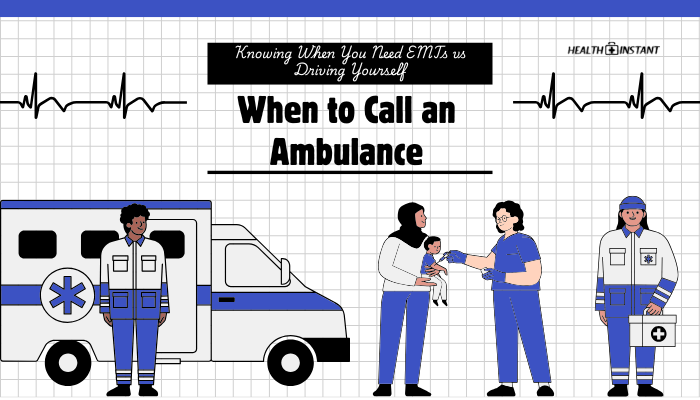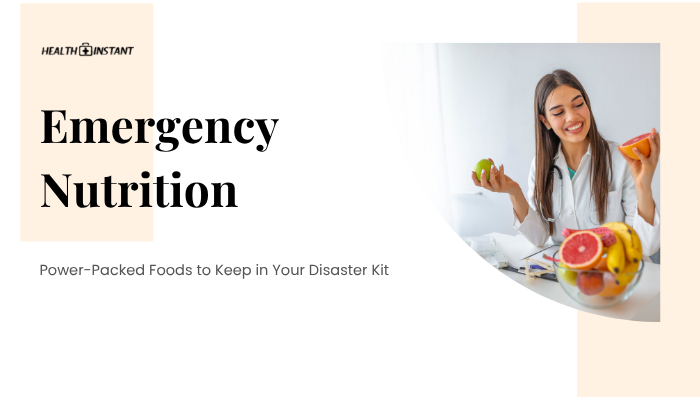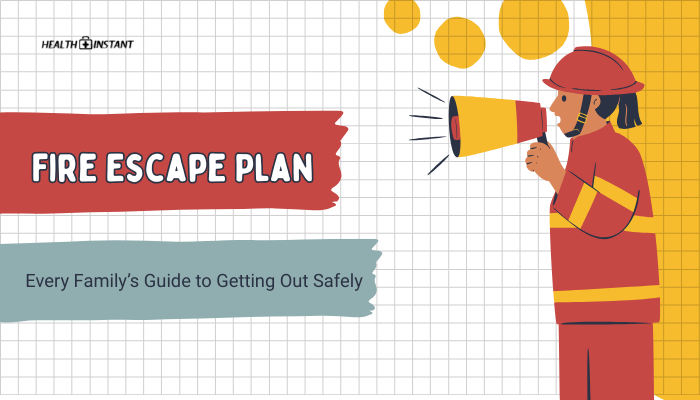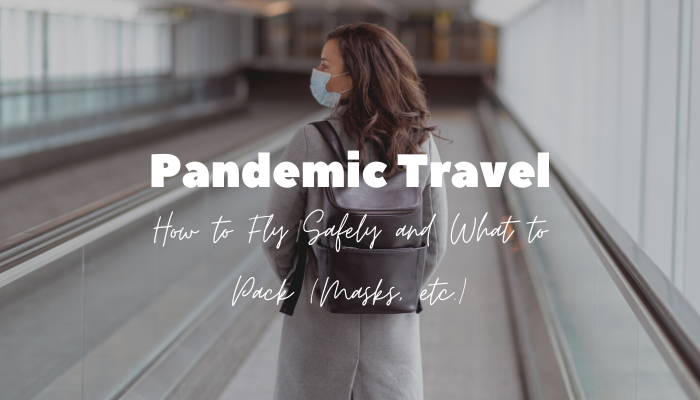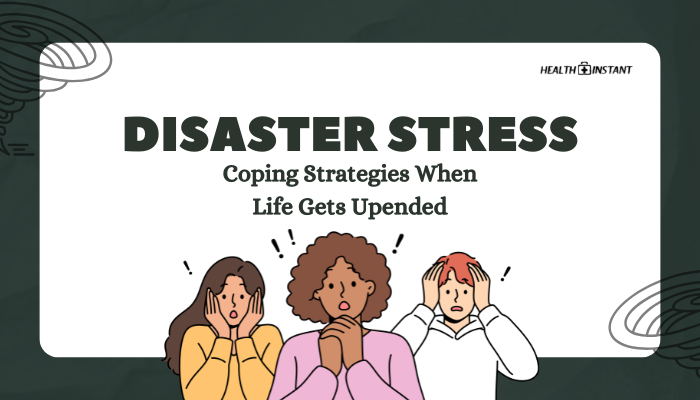Introduction
Emergencies can happen without warning. In such moments, deciding whether to call an ambulance or drive yourself (or a loved one) to the hospital can feel overwhelming. Calling an ambulance means rapid help from Emergency Medical Technicians (EMTs) who are trained to offer critical care on the way to the hospital.
Conversely, driving can sometimes be quicker or less costly for minor issues. Understanding what conditions require emergency medical services, combined with awareness of potential risks, can help you make a safer choice.
This article explains the key signs and symptoms that warrant an ambulance call, highlights situations where driving might be acceptable, and discusses practical considerations such as costs, logistics, and how to communicate vital information during an emergency.
By knowing when professional medical transport is best, you can gain confidence in making the right decision under pressure.
Understanding the Role of Emergency Medical Services
Emergency Medical Services (EMS) provide immediate care and stabilization for people experiencing critical illnesses or injuries. EMTs and paramedics assess vital signs, administer medications, and even perform advanced procedures if needed. In many emergency situations, the time it takes to receive proper care can be the difference between life and death.
Key Functions of an Ambulance Crew
- Rapid Response: Ambulances often have priority on roads, allowing EMTs to reach you quickly.
- On-Scene Assessment: EMTs check your vital signs, gather a quick medical history, and identify urgent needs.
- Stabilization and Treatment: Common interventions include giving oxygen, stopping bleeding, and administering IV fluids or medication.
- Safe Transport: Ambulances bring patients to the closest or most appropriate medical facility, ensuring that continuous care is available during transit.
The decision to call an ambulance goes beyond speed alone. If you experience a potentially life-threatening event, professional monitoring en route can be crucial. Choosing to drive in such cases can risk delayed care, unsafe driving conditions, or sudden deterioration of symptoms without qualified help.
Critical Signs That Warrant an Ambulance
Some emergencies always merit an immediate call to 911 (or your local emergency number). Recognizing these signs can help you avoid delays in necessary care.
1. Signs of a Stroke
A stroke occurs when blood flow to part of the brain is interrupted. Clot-busting treatments or procedures to remove blockages must begin quickly. Common symptoms include:
- Facial Droop: One side of the face appears to droop or feel numb.
- Arm Weakness: Inability to raise one arm or both arms equally.
- Speech Difficulty: Slurred speech, trouble finding words, or inability to speak clearly.
- Sudden Confusion or Vision Changes: Abrupt difficulty seeing or understanding language.
If stroke is suspected, time is essential. Calling an ambulance ensures that first responders can start basic stabilization while alerting the hospital to prepare for specialized care.
2. Chest Pain or Cardiac Emergencies
Heart-related symptoms, particularly chest pain, should not be ignored. Seek immediate ambulance help if you experience:
- Severe Chest Pressure: Pain that feels crushing or spreads to the jaw, neck, back, or arms.
- Shortness of Breath: Unexpected difficulty breathing or feeling of suffocation.
- Sudden Sweating or Lightheadedness: Could be a sign of a heart attack.
- Irregular Heartbeat or Palpitations: Accompanied by dizziness or fainting.
Paramedics have tools like electrocardiogram (ECG) monitors and can give medications (e.g., aspirin, nitroglycerin) before you reach the hospital. Driving yourself during a suspected heart attack is risky if symptoms worsen on the road.
3. Severe Head Injuries and Major Trauma
Major injuries, especially those involving the head, neck, or spine, require expert support:
- Loss of Consciousness or Altered Alertness: Even brief unconsciousness from a fall or accident can indicate significant trauma.
- Heavy Bleeding or Deep Wounds: Large open wounds with uncontrolled bleeding need immediate professional care.
- Possible Spinal Injury: Neck pain, numbness, or inability to move the limbs suggest a high risk of spinal damage.
Ambulance personnel stabilize the neck or back, limit further injury, and monitor for shock. They also relay vital information to the receiving hospital, allowing trauma teams to prepare for your arrival.
4. Breathing Difficulties or Choking
Respiratory distress can worsen quickly. If someone is gasping for air or turning blue, an ambulance is the fastest way to secure breathing and oxygen support.
- Asthma Attacks Not Responding to Inhalers: If standard rescue medication fails, advanced measures may be required.
- Choking: If a foreign object remains lodged, paramedics can use specialized maneuvers.
- Allergic Reactions (Anaphylaxis): Characterized by difficulty breathing, swelling of the throat, and possible drop in blood pressure.
5. Severe Burns
Large or deep burns, especially involving the face, hands, or groin, pose significant risks:
- Blistering or Charred Skin Over a Large Area: Risk of shock, fluid loss, and infection.
- Breathing Issues from Smoke Inhalation: Exposure to fire or toxic fumes can irritate the airways.
In these cases, having professional help is critical to manage pain, infection risk, and possible airway compromise.
6. Uncontrolled Bleeding
Immediate ambulance transport is advised for bleeding that does not subside after applying direct pressure. Significant blood loss can lead to shock, which requires oxygen, IV fluids, and sometimes blood transfusions—interventions that an ambulance team can initiate.
7. Seizures with Ongoing Risk
A short, isolated seizure may be evaluated in an urgent care or hospital if the individual recovers quickly. However, call an ambulance if:
- The Seizure Lasts More Than Five Minutes.
- The Individual Does Not Regain Consciousness.
- Repeated Seizures Occur Without Recovery (Status Epilepticus).
- There Is Head Trauma, Choking, or Difficulty Breathing Afterward.
Paramedics can protect the airway, provide anti-seizure medications, and transport the patient safely.
When Driving Yourself is Possible
Not every medical issue requires emergency services. Some conditions may be handled safely by driving, particularly if another adult can drive you and the distance to a hospital is short. Examples include:
- Mild Cuts Needing Simple Stitches
If bleeding is controlled and the cut is not too deep, a quick drive to an urgent care or emergency department can be enough. - Minor Burns
Small first-degree or mild second-degree burns without risk of airway involvement might be managed by a hospital or urgent care if you can get there without delay. - Stable Broken Bones or Sprains
If the injury involves a small bone (e.g., a finger or toe) or a manageable sprain, you can often drive to urgent care or an emergency department. However, suspect a more severe break if you see a visible deformity, inability to bear weight, or excessive swelling and bruising—those cases might require EMS. - Common Illnesses Without Severe Symptoms
Fever, vomiting, or diarrhea that are uncomfortable but not life-threatening can often wait for a ride to urgent care, as long as you do not show signs of severe dehydration or confusion.
Driving is only advisable for people who feel well enough to operate a vehicle. If dizziness, pain, or disorientation could hinder safe driving, or if you anticipate your symptoms might worsen, waiting for an ambulance is better.
Key Considerations to Make the Decision
Choosing between an ambulance and self-transport involves multiple factors. Beyond symptom severity, the following points can guide your decision.
1. Travel Time and Traffic
Time-sensitive conditions like stroke or heart attack need swift attention. If you face heavy congestion or live far from a hospital, an ambulance’s ability to move through traffic and provide care during transport is invaluable.
2. Potential for Rapid Deterioration
Some conditions, such as allergic reactions or cardiac issues, can escalate within minutes. During ambulance transport, any deterioration can be addressed immediately. In a personal vehicle, you risk being stuck in traffic without professional help.
3. Transportation Support
Driving yourself is rarely a good idea if you have significant pain, drowsiness, or confusion. If you do not have someone who can safely drive and monitor your condition, call an ambulance for reliable care and safer movement.
4. Preexisting Conditions
People with chronic diseases (e.g., heart disease, respiratory ailments, or diabetes) may have unpredictable reactions to additional stress. Oxygen levels, blood pressure, or blood sugar can shift quickly. EMS crews are trained to manage these complications.
5. Age and Overall Vulnerability
Infants, older adults, or pregnant women may require special care. Even moderate conditions can lead to complications for those in higher-risk categories. When in doubt, calling an ambulance is often the safer choice.
Pediatric Considerations
Children’s medical needs can change swiftly. Certain symptoms in a child may be more concerning than in an adult.
- High Fever in Young Children
Infants under three months with a fever of 100.4°F (38°C) or higher often need immediate medical evaluation. If the child is listless or shows signs of dehydration or difficulty breathing, call an ambulance. - Breathing Difficulties
Sudden wheezing, grunting, or inability to speak in full sentences can point to serious respiratory distress. Waiting in traffic could put a child’s health at further risk. - Seizures
Febrile seizures sometimes occur in toddlers with high fever. Although these can be brief, call an ambulance if the seizure lasts more than five minutes, the child stays unresponsive, or you suspect another cause. - Accidents and Falls
Children who fall from a significant height or land on their head need immediate attention. An ambulance can manage potential head or spinal injuries safely, preventing further harm.
While some pediatric issues can be handled by driving to a pediatric urgent care clinic, it is best to call EMS if a child’s condition seems unstable or severe.
Special Populations with Higher Risks
Some adults have health issues that make a simple drive less feasible during a medical event. These groups include:
- Pregnant Women: Conditions like preterm labor, severe abdominal pain, or heavy bleeding require urgent obstetric evaluation. EMS teams can provide initial stabilization, such as intravenous fluids.
- Immunocompromised Individuals: For those receiving chemotherapy or living with suppressed immunity, even mild infections can rapidly progress. If there are signs of severe illness or fever unresponsive to medication, paramedic support is advisable.
- People with Mobility Challenges: Individuals relying on wheelchairs, walkers, or specialized devices may be safer in an ambulance equipped to secure mobility equipment and deliver quick care.
- Patients with Dementia or Cognitive Impairments: They may not accurately communicate symptoms or manage safe travel, so EMS ensures they get the help they need.
Insurance and Cost Factors
Healthcare costs can influence your decision, although emergencies must focus on safety first. Still, it helps to know the basics:
- Ambulance Fees
- Many insurance plans cover ambulance rides for true emergencies.
- Costs can be high if the insurance company deems the call non-emergency.
- Many insurance plans cover ambulance rides for true emergencies.
- Driving Costs
- Self-transport involves gas, parking fees, and possible tolls.
- Expenses can grow if you must return to pick up your car after hospitalization.
- Self-transport involves gas, parking fees, and possible tolls.
- Clarity of Coverage
- Some plans require prior authorization for non-emergency transport, which is often not feasible during urgent situations.
- If you are unsure, focus on the medical necessity. A genuine emergency call is usually deemed appropriate.
- Some plans require prior authorization for non-emergency transport, which is often not feasible during urgent situations.
While cost is an important factor, do not let it override urgent health needs. Delaying care or driving in a life-threatening scenario can increase the risk of complications and future medical expenses.
How to Call an Ambulance
Dialing 911 (or your regional emergency number) is straightforward, but certain steps can help responders reach you more efficiently.
- Stay Calm and Speak Clearly
- Give your name, phone number, and exact location with nearby landmarks.
- Describe the patient’s main symptoms or injury.
- Give your name, phone number, and exact location with nearby landmarks.
- Explain Your Situation
- Highlight any known medical conditions or allergies.
- If the situation involves chest pain, mention how long it has been present and if any home treatments were attempted.
- Highlight any known medical conditions or allergies.
- Follow Instructions
- The operator may ask you to perform specific first aid steps.
- Leave your phone on in case EMS needs more information.
- The operator may ask you to perform specific first aid steps.
- Secure the Area
- Unlock doors or gates.
- Move pets away.
- If outside, use hazard lights on your vehicle or stand in a visible spot to guide paramedics.
- Unlock doors or gates.
By preparing these details, you shorten the time it takes for EMTs to begin care.
Basic First Aid Steps While Waiting
While waiting for an ambulance, you can take simple actions to help stabilize the situation:
- Stop Bleeding
- Apply firm, direct pressure with a clean cloth.
- Elevate the injured area if possible.
- Apply firm, direct pressure with a clean cloth.
- Support Breathing
- If someone is unconscious but still breathing, position them on their side to prevent choking on vomit.
- If they are not breathing, begin hands-only cardiopulmonary resuscitation (CPR) if you are trained. An operator may guide you through CPR steps over the phone.
- If someone is unconscious but still breathing, position them on their side to prevent choking on vomit.
- Avoid Moving Injured People
- If you suspect a spinal or neck injury, keep the person still and support their head until help arrives.
- Movement could worsen the damage.
- If you suspect a spinal or neck injury, keep the person still and support their head until help arrives.
- Keep the Person Warm
- Cover them with a blanket or extra clothing to prevent hypothermia, especially if they are in shock.
- Cover them with a blanket or extra clothing to prevent hypothermia, especially if they are in shock.
- Stay by Their Side
- Offer reassurance and monitor their condition.
- Inform the operator or arriving EMTs if you notice changes in consciousness or breathing.
- Offer reassurance and monitor their condition.
These measures do not replace professional medical help but can reduce risks until EMTs arrive.
Driving Yourself: Best Practices if You Must
For situations where driving is appropriate, consider the following tips to reduce hazards:
- Ask Someone Else to Drive
- Avoid driving if you are the one who is sick or injured.
- A friend or family member can focus on the road while you rest.
- Avoid driving if you are the one who is sick or injured.
- Check Your Symptoms
- If you feel dizzy, weak, or short of breath, do not drive.
- Delay travel until you can remain alert for the entire trip.
- If you feel dizzy, weak, or short of breath, do not drive.
- Plan the Fastest Route
- Know the quickest way to the hospital or urgent care center.
- Avoid high-traffic roads if possible, or check traffic conditions beforehand.
- Know the quickest way to the hospital or urgent care center.
- Pull Over If Symptoms Worsen
- If chest pain, breathing difficulty, or confusion suddenly intensifies, stop and call 911.
- Trying to power through severe symptoms while driving puts you and others at risk.
- If chest pain, breathing difficulty, or confusion suddenly intensifies, stop and call 911.
- Bring Identification and Medical Info
- Keep your ID, insurance details, and medication list with you.
- This information saves time during registration at the hospital.
- Keep your ID, insurance details, and medication list with you.
Potential Dangers of Driving in Emergencies
Driving during a medical crisis carries risks that can affect both the patient and others on the road:
- Sudden Loss of Consciousness: Conditions like heart attacks, seizures, or low blood sugar can cause you to pass out behind the wheel.
- Inability to Concentrate: Pain or anxiety can impair judgment and reaction times.
- Exacerbating Injuries: Without proper immobilization, certain fractures or neck injuries may worsen during sudden stops or turns.
- Accidents Leading to Additional Injuries: Even mild collisions can have serious consequences when you are already ill or injured.
Always weigh these dangers against any perceived savings in time or cost. If your life or someone else’s life is at stake, an ambulance is safer.
Follow-Up Care After an Ambulance Ride
An ambulance trip usually leads to an emergency department evaluation. Depending on the outcomes:
- Admission to the Hospital
- For severe cases, you may stay in a hospital ward for further tests and monitoring.
- Surgery or other interventions could follow if needed.
- For severe cases, you may stay in a hospital ward for further tests and monitoring.
- Discharge with Care Instructions
- Patients with stable conditions might go home the same day with guidelines for rest, medications, or follow-up visits.
- Make sure to understand all discharge paperwork. Ask questions if instructions are unclear.
- Patients with stable conditions might go home the same day with guidelines for rest, medications, or follow-up visits.
- Referrals to Specialists
- If needed, you may be directed to a cardiologist, neurologist, or other specialists.
- Always keep follow-up appointments to ensure complete recovery.
- If needed, you may be directed to a cardiologist, neurologist, or other specialists.
- Continued Self-Monitoring
- Watch for new or recurring symptoms.
- Keep emergency contact information handy in case you need prompt help again.
- Watch for new or recurring symptoms.
Whether you arrive by ambulance or private car, consistent follow-up care reduces complications and supports long-term health.
Community Resources and Preventive Measures
Proactive steps can reduce the frequency of emergency calls:
- Regular Health Screenings
- Check your blood pressure, cholesterol, and blood sugar.
- Early management of chronic conditions can prevent crises.
- Check your blood pressure, cholesterol, and blood sugar.
- Medication Management
- Stick to treatment plans, especially for hypertension or heart disease.
- Keep extra medication in easily accessible places.
- Stick to treatment plans, especially for hypertension or heart disease.
- First Aid and CPR Training
- Attend local classes to learn lifesaving techniques.
- Basic knowledge helps you stay calm and assist others effectively.
- Attend local classes to learn lifesaving techniques.
- Smart Home Alarms
- Automated systems can alert emergency services if you fall or become unconscious.
- Wearables can track heart rate, oxygen, and activity levels.
- Automated systems can alert emergency services if you fall or become unconscious.
- Community Health Programs
- Some regions have paramedicine services that do home visits for high-risk individuals.
- Local clinics may offer preventative care or educational workshops on managing illnesses.
- Some regions have paramedicine services that do home visits for high-risk individuals.
By addressing health needs early and knowing how to respond in urgent situations, you help create a safer environment for yourself and others.
Conclusion
Calling an ambulance can be a lifesaving decision in emergencies involving stroke, heart attack, severe trauma, breathing difficulties, or any rapidly worsening condition. EMTs offer on-scene stabilization, continuous monitoring, and immediate transport to the nearest appropriate facility.
Attempting to drive yourself or a loved one during these episodes can lead to delayed care or worsening symptoms.
Less severe injuries and illnesses may be addressed by driving, especially if another capable driver is available and the distance to a healthcare facility is short. However, always weigh factors such as symptom severity, risk of rapid deterioration, and the patient’s overall vulnerability.
When uncertainty arises, err on the side of caution and call for professional help. By recognizing critical warning signs and planning ahead, you can act decisively to protect your health and that of others.
References
- American College of Emergency Physicians. Guidelines for calling 911 in an emergency. Ann Emerg Med. 2019;73(2):208–215.
- Bogle V, Mehrotra A. Understanding emergency medical services utilization. J Emerg Med. 2020;58(4):602–609.
- World Health Organization. Prehospital trauma care systems. WHO Publication. 2017;1(1):1–32.
- Blewer AL, McGovern SK, Schmicker RH, et al. Bystander cardiopulmonary resuscitation and survival in out-of-hospital cardiac arrest. N Engl J Med. 2020;356(6):603–611.
- Stroke Association. Recognizing and responding to stroke warning signs. Stroke J. 2018;10(3):45–52.
- Razzak JA, Kellermann AL. Emergency medical care in developing countries: Is it worthwhile? Bull World Health Organ. 2017;80(11):900–905.
- American Heart Association. Heart attack warning signs. Circulation. 2021;144(7):e268–e277.
- National Institute of Neurological Disorders and Stroke. Stroke: Hope through research. NIH Publication. 2021;12(4):1–24.
- Centers for Disease Control and Prevention. Emergency department data for injuries. CDC Data Brief. 2019;38(2):1–10.
- Mowafi H, He S, LeBom R, et al. Disparities in ambulance use for acute conditions. Health Aff (Millwood). 2020;39(12):2108–2116.
- Callaway CW, Donnino MW, Fink EL, et al. Part 8: Post–cardiac arrest care. Circulation. 2021;134(8):e168–e190.
- Keay T, Tascone A, Wilson J. Pediatric emergencies and the role of EMS. Pediatr Emerg Care. 2018;34(5):315–320.

